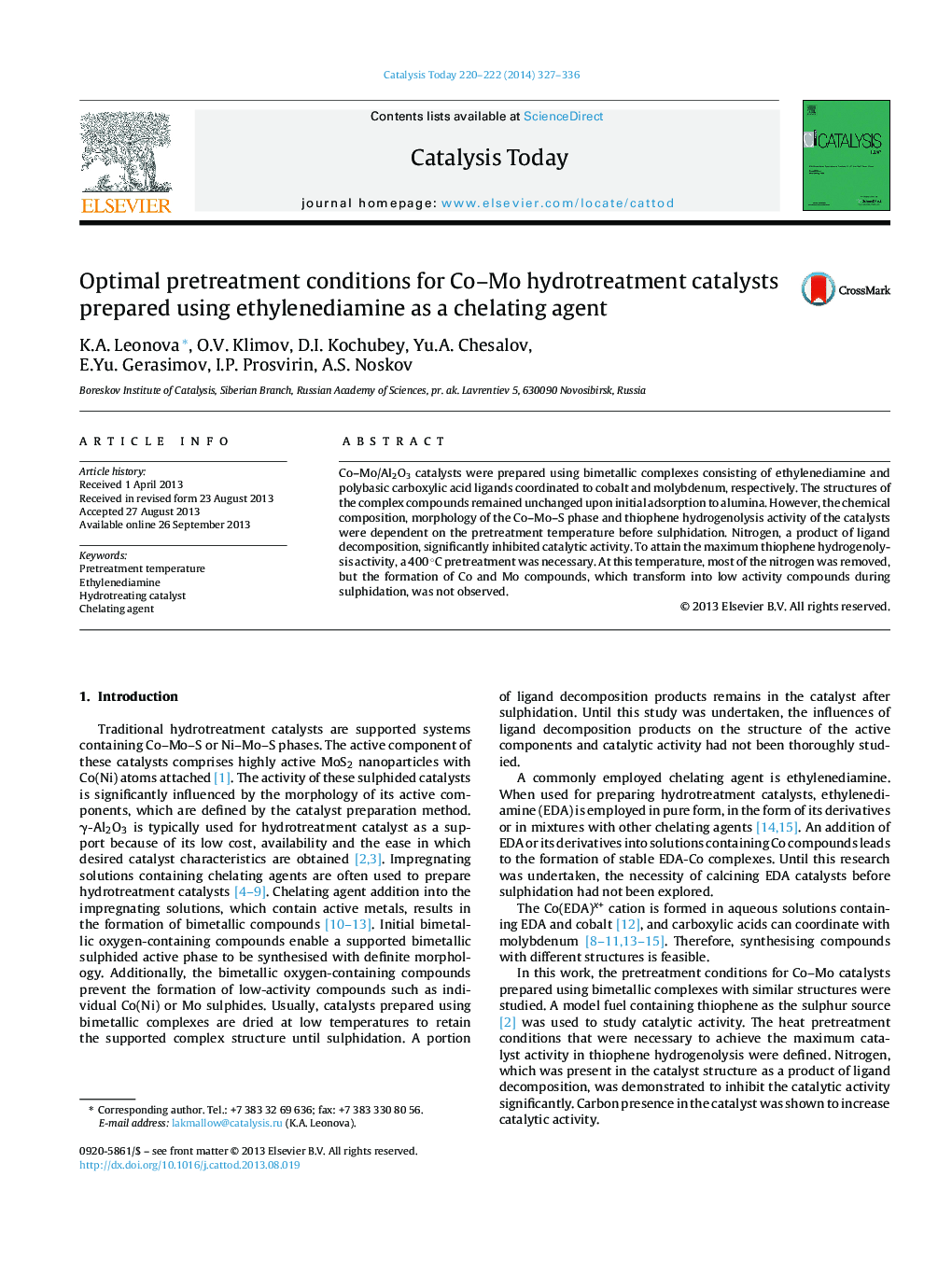| Article ID | Journal | Published Year | Pages | File Type |
|---|---|---|---|---|
| 54414 | Catalysis Today | 2014 | 10 Pages |
•Co–Mo catalysts prepared using bimetallic complexes containing EDA were studied.•Sulfided catalysts previously dried at 120–300 °C contain products of ligand decomposition.•Presence of carbon in hydrotreating catalysts increases HDS activity.•Nitrogen in the composition of sulfided catalysts inhibits HDS activity.•Optimal pretreatment temperature for Co–Mo catalysts prepared using EDA is 400 °C.
Co–Mo/Al2O3 catalysts were prepared using bimetallic complexes consisting of ethylenediamine and polybasic carboxylic acid ligands coordinated to cobalt and molybdenum, respectively. The structures of the complex compounds remained unchanged upon initial adsorption to alumina. However, the chemical composition, morphology of the Co–Mo–S phase and thiophene hydrogenolysis activity of the catalysts were dependent on the pretreatment temperature before sulphidation. Nitrogen, a product of ligand decomposition, significantly inhibited catalytic activity. To attain the maximum thiophene hydrogenolysis activity, a 400 °C pretreatment was necessary. At this temperature, most of the nitrogen was removed, but the formation of Co and Mo compounds, which transform into low activity compounds during sulphidation, was not observed.
Graphical abstractFigure optionsDownload full-size imageDownload high-quality image (205 K)Download as PowerPoint slide
